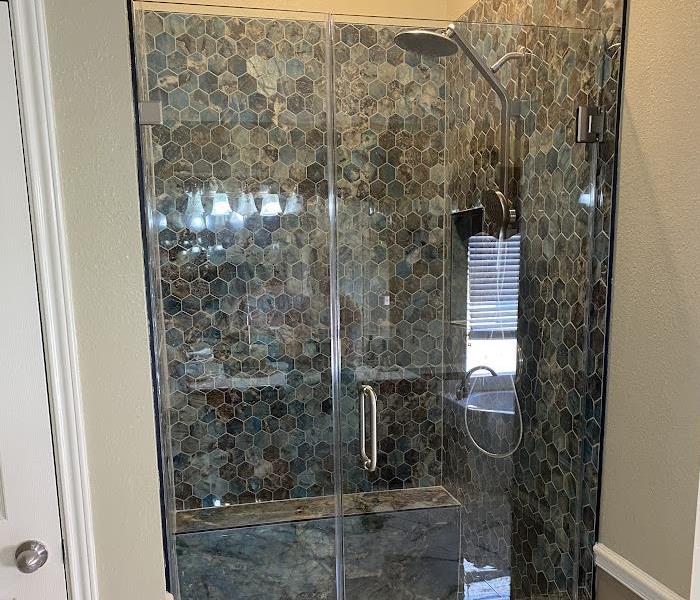Mold in Basements: Expert Waterproofing and Mold Prevention Tips from SERVPRO®
11/13/2024 (Permalink)
 Understanding how to prevent mold in your basement through proper waterproofing techniques can save you from costly repairs and structural damage.
Understanding how to prevent mold in your basement through proper waterproofing techniques can save you from costly repairs and structural damage.
Mold in basements is a common issue that many homeowners in New Braunfels, TX, face, especially in areas prone to heavy rainfall or moisture accumulation. With basements being below ground level, they are more susceptible to dampness and water intrusion, making them an ideal breeding ground for mold. Understanding how to prevent mold in your basement through proper waterproofing techniques can save you from costly repairs and structural damage.
In this blog, we'll dive into expert insights on waterproofing and mold prevention for your basement, ensuring your home remains safe, dry, and mold-free.
Why Mold Grows in Basements
Basements provide a perfect environment for mold growth. Mold thrives in areas that are damp, dark, and poorly ventilated—all characteristics often found in basements. Moisture can come from various sources, including groundwater seepage, high humidity, plumbing leaks, and poor drainage systems around the home.
A statistic by the Environmental Protection Agency (EPA) highlights the prevalence of mold issues, noting that approximately 50% of U.S. homes have dampness or water problems that can lead to mold. This reinforces the importance of implementing strategies to prevent moisture and mold from taking hold in your basement.
Expert Tips for Waterproofing and Mold Prevention
When it comes to preventing mold, waterproofing your basement is crucial. Here are some expert tips to ensure your basement remains dry and mold-free:
1. Seal Cracks and Openings
Even small cracks in your basement walls or floor can allow water to seep in, creating an environment conducive to mold growth. Use a high-quality waterproof sealant to fill in cracks and gaps, especially around windows and joints where walls meet the foundation. This can help prevent water intrusion during storms or heavy rain.
2. Install a Sump Pump
A sump pump is an essential tool for keeping water out of your basement. It works by collecting water that accumulates in a sump basin and pumping it away from your home. Installing a sump pump can significantly reduce the risk of flooding, especially if your home is in an area prone to heavy rainfall or a high water table.
3. Ensure Proper Drainage
Make sure the ground surrounding your home slopes away from the foundation. Poor grading can cause water to pool near your home, eventually seeping into your basement. Installing gutters and downspouts that divert water at least six feet away from your foundation can also help prevent moisture from accumulating around the perimeter of your house.
4. Use a Dehumidifier
A dehumidifier is an excellent way to control humidity levels in your basement. Mold grows when relative humidity exceeds 60%, so keeping your basement’s humidity below this level is critical. By reducing moisture in the air, you can prevent the growth of mold and mildew.
5. Install Vapor Barriers
Vapor barriers are materials (often made from polyethylene) that block moisture from entering your basement through walls and floors. These barriers can be installed during construction or as part of a basement finishing project to keep moisture from permeating through concrete or other porous materials.
6. Regularly Inspect for Leaks
Small leaks in plumbing pipes or fixtures can lead to long-term moisture problems if left unchecked. Make it a habit to regularly inspect any exposed plumbing in your basement for signs of leaks. Catching leaks early can prevent water from accumulating and causing mold growth.
Additional Steps for Long-Term Mold Prevention
In addition to the tips mentioned above, here are some extra steps you can take to ensure your basement remains mold-free in the long run:
- Monitor Humidity Levels: Invest in a hygrometer to measure the humidity in your basement. This will help you stay informed and take action if levels begin to rise.
- Waterproof Basement Walls: Apply a waterproofing membrane or paint to your basement walls as an added layer of protection. This will help keep moisture out while providing a mold-resistant surface.
- Perform Routine Maintenance: Regularly clean and maintain your basement by checking for water stains, damp areas, or musty odors. Early detection is key to preventing mold from spreading.
The Importance of Professional Mold Remediation
If you suspect mold has already developed in your basement, professional remediation is crucial. SERVPRO specializes in mold removal and remediation services, providing homeowners with peace of mind. Our team of experts will assess the extent of the mold issue, address the underlying moisture problem, and restore your basement to a mold-free condition.
Conclusion
Preventing mold in your basement is an essential aspect of home maintenance. By implementing these expert waterproofing tips, you can significantly reduce the risk of water damage and mold growth. From sealing cracks to installing a sump pump, each preventive measure plays a vital role in keeping your basement dry and safe.
If you're ever unsure about how to properly address water or mold issues, don't hesitate to contact SERVPRO for professional assistance. With our extensive experience in mold remediation and waterproofing, you can trust us to protect your home from mold-related problems.

 24/7 Emergency Service
24/7 Emergency Service